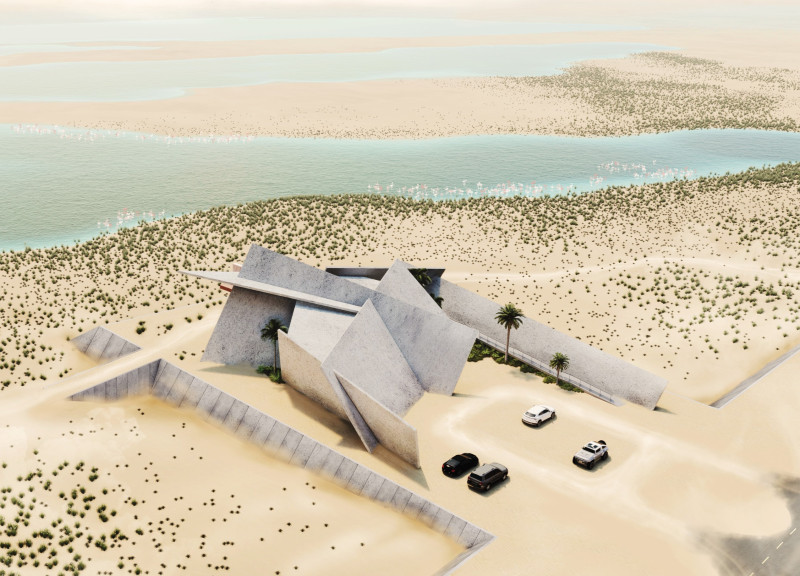5 key facts about this project
At the core of this architectural endeavor is a commitment to enhancing user experience through carefully considered design elements. The project functions primarily as [insert specific functions like residential, commercial, or cultural], fulfilling essential needs while also fostering a sense of community engagement. The spaces within are designed to accommodate both social interactions and individual activities, promoting a balanced lifestyle and encouraging a dynamic interplay between users and their environment.
Significant attention has been paid to the overall layout, where the flow between different areas is seamless. The design incorporates open spaces that invite natural light, creating an inviting atmosphere throughout the interior. This emphasis on transparency is further emphasized by large windows and strategically placed outdoor areas, allowing for a constant visual connection with nature. These design choices not only enhance the aesthetic appeal of the project but also contribute to the overall well-being of its occupants.
The material palette is notably diverse, reflecting a careful selection process that prioritizes sustainability and contextual relevance. Among the materials used, [list materials such as locally sourced timber, recycled concrete, or expansive glass] highlight a commitment to eco-friendliness while ensuring durability and functionality. The careful integration of these materials fosters an environment that resonates with the local culture, anchoring the project within its geographical context.
One unique aspect of the design lies in the incorporation of natural elements and landscaping into the overall plan. The building interacts harmoniously with its surroundings, blurring the lines between indoor and outdoor spaces. Green roofs, vertical gardens, or courtyards serve not only as aesthetic enhancements but also as crucial components for biodiversity and sustainability. This design approach encourages users to engage with their environment actively, promoting a greater sense of place and belonging.
The architects employed innovative design strategies throughout the project, employing principles of passive design to maximize energy efficiency. Natural ventilation, sunlight orientation, and thermal massing have been considered carefully to reduce energy consumption while creating a comfortable living and working environment. Such features are not only practical but reflect a deeper understanding of the relationship between architecture and the natural world.
In terms of social interaction, the design emphasizes spaces for gathering and collaboration. Shared areas, such as community rooms or outdoor terraces, are strategically located to facilitate interaction among users, creating an inclusive atmosphere. This focused attention on communal spaces fosters a sense of connection among residents and users, encouraging a vibrant community spirit.
What makes this project particularly notable is the intentional way in which local architectural traditions have been woven into its design. The use of indigenous materials, design motifs, or structural techniques pays homage to the cultural identity of the area while ensuring that the project feels like a natural extension of its surroundings. Such efforts to honor local heritage further deepen the relevance and significance of the architecture, making it more than just a building, but rather a landmark reflecting collective memory and identity.
As you delve deeper into the project’s presentation, I encourage you to explore the architectural plans, sections, and designs that illustrate the thought process behind each element. The deliberate choices and innovative approaches taken throughout this project illuminate not only its purpose but also its potential to inspire other architectural ideas and initiatives moving forward. By examining the architectural details, you can appreciate the nuanced complexities and innovative strategies that have shaped this exceptional project.


























